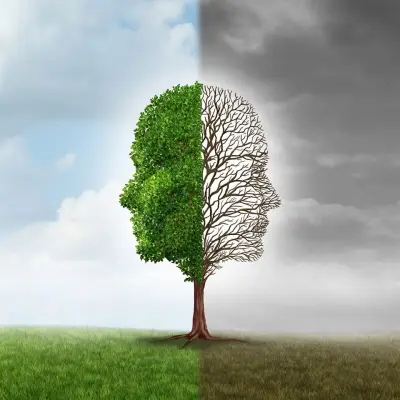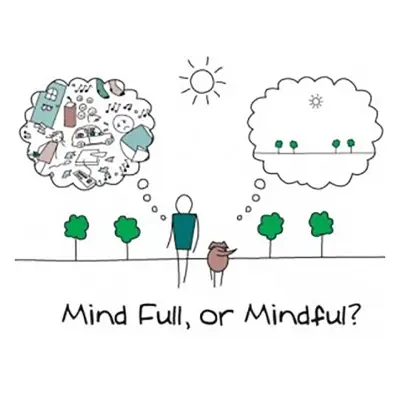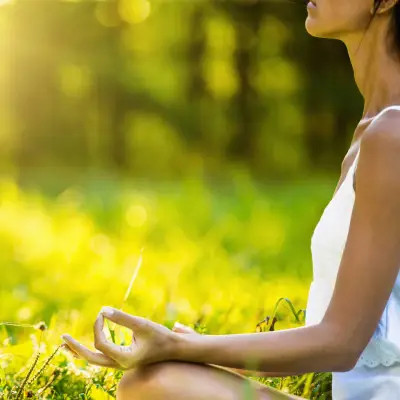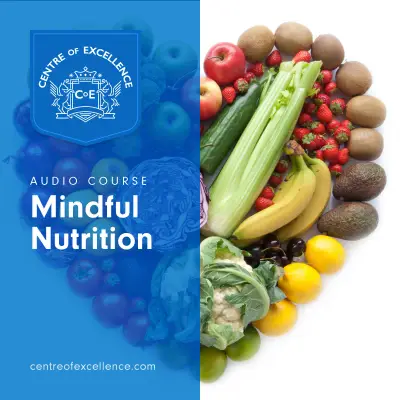If you've ever felt overwhelmed by modern life, you're not alone. Many people are turning to meditation to find a sense of peace and clarity. One particular form of meditation that's gaining popularity is Vipassana. But what exactly is Vipassana meditation, and what benefits can it offer? Let's dive into this ancient practice and discover its meaning and benefits.
Jump to:
Recommended for you!
Best SellersWhat is Vipassana Meditation?
Vipassana, which means "insight" or "clear seeing," is one of the oldest forms of meditation. It’s believed to have been taught by the Buddha himself. Although rooted in Buddhism, it's accessible to anyone regardless of their religious or spiritual beliefs.
The Definition of Vipassana in Buddhism

Vipassana Buddhism involves observing your thoughts and feelings without judgment. It's about seeing things as they truly are, gaining insight into the nature of reality, and ultimately achieving liberation from suffering. This form of meditation focuses on mindfulness and awareness.
Did Buddha Practice Vipassana?
It’s widely believed that the Buddha practised Vipassana as a part of his journey to enlightenment. His teachings laid the foundation for this meditation technique, which has been passed down through generations.
The Core Principles of Vipassana Meditation
Vipassana is a holistic approach to living guided by three core principles. These principles provide a foundation for the practice and ensure that it leads to meaningful and lasting change.
Morality (Sīla)
Morality, or Sīla, is the first principle of Vipassana. It involves adhering to ethical conduct and maintaining a moral lifestyle. This principle is essential because it creates a stable and harmonious environment conducive to meditation.
By living a life of integrity and honesty, practitioners minimise distractions and disturbances that can arise from unethical behaviour. Morality in Vipassana is not just about following rules; it's about developing deep compassion and respect for all living beings. This includes being truthful, non-violent, and considerate in all actions, which helps purify the mind and create a peaceful and peaceful atmosphere.
Concentration (Samādhi)
The second principle, concentration or Samādhi, involves developing focus and mental discipline. Concentration is cultivated through various meditation techniques, primarily by focusing on the breath. This practice helps to quiet the mind, allowing practitioners to remain present and attentive.
Concentration is the bedrock of deeper meditation practices, enabling the mind to become steady and calm. As concentration improves, so does the ability to observe thoughts and sensations without becoming attached to them. This disciplined focus is essential for progressing to the next level of Vipassana practice, where deeper insights are gained.
Wisdom (Paññā)
Wisdom, or Paññā, is the third and final principle of Vipassana meditation. It involves cultivating a deep understanding and insight into the true nature of reality. Through sustained practice, meditators begin to see things as they really are, beyond the illusions and misconceptions of the mind.
This wisdom arises from direct experience rather than intellectual knowledge. It includes understanding the impermanent, unsatisfactory, and non-self nature of all phenomena. This insight helps to eradicate deep-rooted mental defilements, leading to true liberation from suffering. Paññā empowers people to make wise and compassionate choices in their daily lives, fostering a sense of inner peace and contentment.
How to Practise Vipassana Meditation: The 4 Stages

Vipassana meditation is a structured practice that unfolds in several stages, each building on the previous one to deepen awareness and insight. These stages guide practitioners from basic concentration techniques to profound states of mindfulness and equanimity. Let’s explore each stage in detail:
1. Awareness of Respiration
The first stage of Vipassana meditation is Awareness of Respiration, which is often referred to as Anapana meditation. Here, the focus is on the breath, which serves as the primary object of attention. Practitioners sit comfortably and bring their awareness to the natural flow of their breath, observing each inhalation and exhalation without trying to control it.
This practice helps to calm the mind and develop concentration. By focusing on the breath, practitioners begin to notice the subtleties of the respiratory process, such as the sensation of air entering and leaving the nostrils. This concentrated attention helps to anchor the mind in the present moment, reducing the tendency for thoughts to wander. Over time, this stage lays the groundwork for deeper meditative practices by cultivating a stable and focused mind.
2. Body Scan
The second stage of Vipassana meditation is the Body Scan. In this stage, practitioners systematically observe physical sensations throughout the body. This involves mentally scanning the body from head to toe, noticing any sensations such as tingling, warmth, pressure, or pain.
The body scan is conducted with a non-judgmental and curious attitude. Practitioners observe sensations as they are, without trying to change or avoid them. This practice develops heightened bodily awareness and helps to uncover the impermanent nature of sensations. It also fosters a sense of equanimity, as meditators learn to observe discomfort and pleasure with the same balanced mind.
By continually scanning the body, practitioners gain insights into the interconnectedness of physical and mental processes. They begin to see how emotions and thoughts can manifest as physical sensations, leading to a deeper understanding of the mind-body connection.
3. Mindfulness of Thoughts and Emotions
The third stage of Vipassana meditation is Mindfulness of Thoughts and Emotions. In this stage, practitioners expand their awareness beyond physical sensations to include their mental landscape. This involves observing thoughts and emotions as they arise and pass away, without becoming attached to them.
Practitioners learn to recognise the transient nature of mental phenomena. Instead of getting caught up in thoughts and emotions, they observe them as if they were watching clouds pass across them. This detached observation helps to cultivate a sense of inner calm and clarity.
Meditators might notice patterns in their thinking and emotional responses during this stage. For example, they may become aware of recurring thoughts of worry or anger and see how they affect their overall well-being. By observing these mental events without judgment or reaction, practitioners can reduce their grip and influence, leading to greater emotional resilience and stability.
4. Equanimity
The final stage of Vipassana meditation is Equanimity. This stage represents the culmination of the practice, where the mind achieves a state of balanced and non-reactive awareness. Equanimity involves maintaining a calm and composed mind regardless of the sensations, thoughts, or emotions that arise during meditation.
Developing equanimity is about training the mind to respond to experiences with neutrality rather than aversion or craving. Practitioners learn to accept both pleasant and unpleasant sensations with the same balanced attitude, recognising that all experiences are temporary and constantly changing.
Equanimity is cultivated through continuous and consistent practice. As meditators deepen their understanding of the impermanent and non-self nature of all phenomena, they develop a sense of inner peace and stability that is not easily disturbed by external events. This balanced state of mind extends beyond meditation sessions, influencing how practitioners interact with the world and handle life's challenges.
The Benefits of Vipassana Meditation

Vipassana meditation offers numerous benefits for both the mind and body. Here are some key advantages:
- Enhanced Self-Awareness: By observing your thoughts and emotions, you gain a deeper understanding of yourself.
- Improved Concentration: Regular meditation helps improve focus and attention.
- Emotional Regulation: Vipassana teaches you to respond to situations with calmness and clarity rather than reacting impulsively.
- Better Physical Health: Many practitioners report improved sleep, reduced blood pressure, and overall better physical health.
- Increased Patience and Tolerance: By observing and accepting experiences as they are, you develop greater patience and tolerance for yourself and others.
- Greater Mindfulness: Vipassana enhances your ability to stay present and mindful throughout the day, improving your overall quality of life.
- Enhanced Emotional Intelligence: By understanding your emotions more clearly, you can navigate social interactions more effectively and empathetically.
- Improved Decision-Making: With a clearer mind and better emotional regulation, your decision-making skills can become sharper and more balanced.
- Reduction of Negative Habits: The self-awareness developed through Vipassana can help in identifying and reducing harmful habits and behaviours.
- Boosted Creativity: A calm and clear mind is more receptive to creative thoughts and ideas, enhancing your creative potential.
- Enhanced Resilience: Regular practice of Vipassana strengthens your ability to cope with life’s challenges and setbacks more effectively.
Recommended for you!
Best SellersFrequently Asked Questions About Vipassana Meditation
How Does Vipassana Affect the Brain?
Scientific studies have shown that Vipassana meditation can have a powerful impact on the brain. It can increase grey matter in areas associated with learning, memory, and emotional regulation. It also reduces the activity in the amygdala, the brain region involved in the stress response, leading to lower stress levels.
Is Vipassana Good or Bad for You?
Overall, Vipassana is considered beneficial for most people. However, it can be challenging and may not be suitable for everyone. Those with severe mental health issues should consult a professional before undertaking a Vipassana retreat.
Why is Vipassana Painful?
The physical discomfort of sitting for long periods can be challenging, especially for beginners. However, this pain is seen as part of the process, teaching practitioners to observe sensations without reacting.
Can Vipassana Cure Any Disease?
While Vipassana is not a cure-all, it can support overall well-being and help manage certain conditions like anxiety and depression. It should not replace professional medical treatment but can be a valuable complement.
Does Vipassana Affect Sleep?
Many practitioners find that their sleep quality improves with regular practice. The relaxation and stress reduction from meditation contributes to better sleep patterns.
Why Do People Cry During Vipassana?
Crying during Vipassana can occur as suppressed emotions surface. The practice encourages a deep level of introspection, which can release emotional blockages and lead to cathartic experiences.
Who Should Not Do Vipassana?
While Vipassana is generally safe, it might not be suitable for people with severe mental health conditions or those who find extended silence and introspection overwhelming. It's important to consult with a healthcare provider if you have any concerns.
Can Vipassana Be Done Lying Down?
While Vipassana is traditionally practised in a seated position, it can also be done lying down, especially for those with physical limitations. However, lying down might increase the likelihood of falling asleep, so it is generally recommended to sit upright if possible.
Study Meditation for £29
If you're interested in exploring meditation further, consider enrolling in the Meditation Diploma Course with Centre of Excellence. This fascinating course is available at a discounted price of £29 and is designed to guide you through various meditation techniques, including Vipassana. Start your journey towards greater mindfulness and well-being today.













